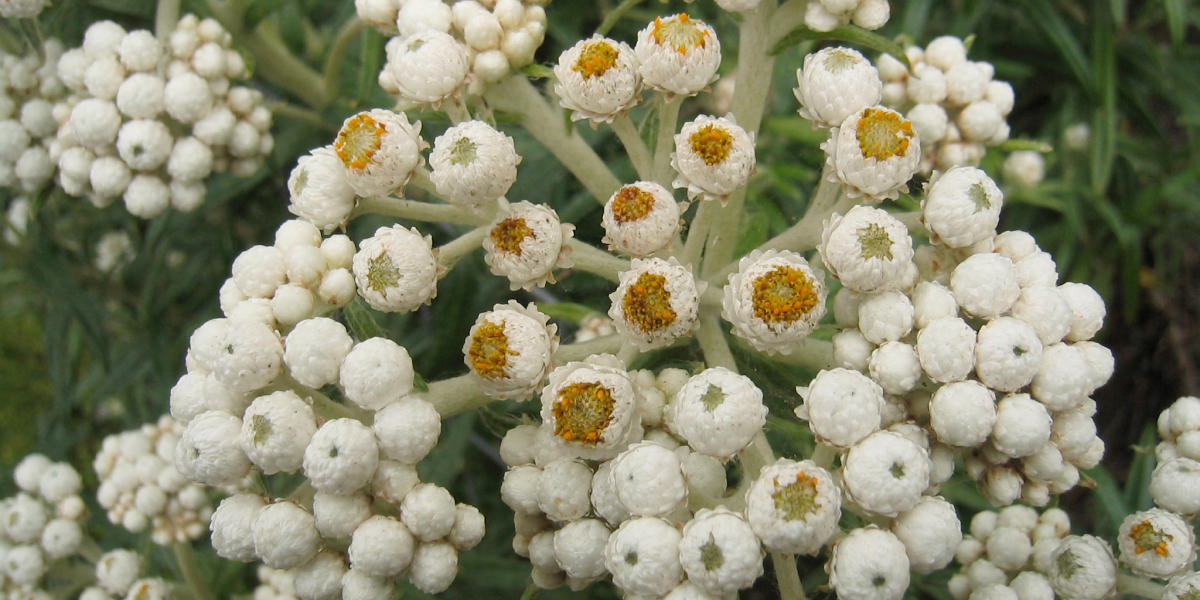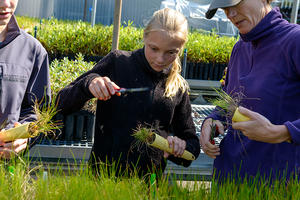
Endangered
No
Population
Native/Common
Latin Derivation
Genus: Anaphalis - from the original Greek name for similar plant.
Species: margaritacea - from the Latin margarita, “pearl” hence “pearl like.”
Family
Asteraceae, or Sunflower Family. In the Bay Area, the Asteraceae family has more species than any other family of flowering plants. Sepals are absent, sometimes replaced by a structure of hairs and scales called a pappus. Small dry fruit develops below the pappus containing a single seed that is dispersed by wind or animals. Each head consists of several flowers attached to a disk shaped, conical, or concave receptacle.
Description
White, papery bracts with yellow-to-red flowers in the center. The flower bracts dry and remain on the stem until late fall. Blooms in June-September (or longer). Leaves are shiny and bright to dark green; they are narrow, 3–4 inches long. Grows to be 3–5 feet tall, stems are unbrached, and fruits are very small and roughened.
Habitat
Along dry trails and throughout open areas and woods.
Interesting Information
Grows in colonies of a dozen or more plants arising off parallel woody root systems. Often seeds in after a fire. Can be grown by rhizome.
Ethnobotanical Information
Can be used medicinally as an anti-inflammatory and astringent. Can be used as a tea for gastric disturbances, as a poultice for bruises and contusions, and has been fried and cured for Native American smoking mixtures.

